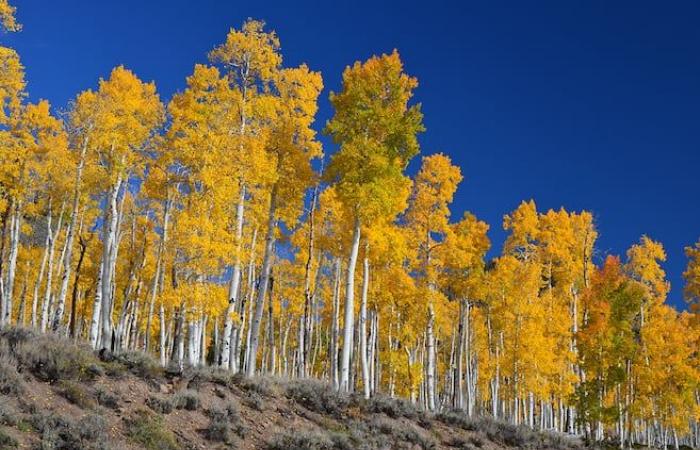Seen from the outside, it is a colony of 47,000 aspen trees. They are linked together by a common root system spanning 43 hectares in Fishlake National Forest, Utah. Each of the trees is considered by biologists to be a “clone” of the original tree, which makes this vast grouping a single living organism. “Pando” – that’s his name – has therefore just inherited the status of world dean.
It is through DNA analysis that we can theoretically put a date. And more precisely a DNA analysis targeting, in different parts of the tree, somatic mutations, that is to say those which occur after conception. It is this “mosaic of somatic mutations” that researchers describe in an article recently pre-published on the BioRxiv platform (which means that it has not been reviewed by other experts).
The problem is that it is impossible to demonstrate that we have not “missed” certain mutations, and this is why the range these researchers arrive at is extremely wide: between 16,000 and 81,000 years ago. .
But even with the minimum age of 16,000 years, this makes “Pando” the record holder for longevity. And perhaps not just in trees: another colony of “clones”, this time a flowering plant, in Tasmania (Lomatia tasmanica), is dated approximately 43,000 years ago. While a Mediterranean seagrass colony (Posidonia oceanica) could be 200,000 years old.
This latest colony extends over 40 sites covering 3,000 km2, from Spain to the island of Cyprus — enough to give it some insurance policy to survive future extreme weather events.
Canada






